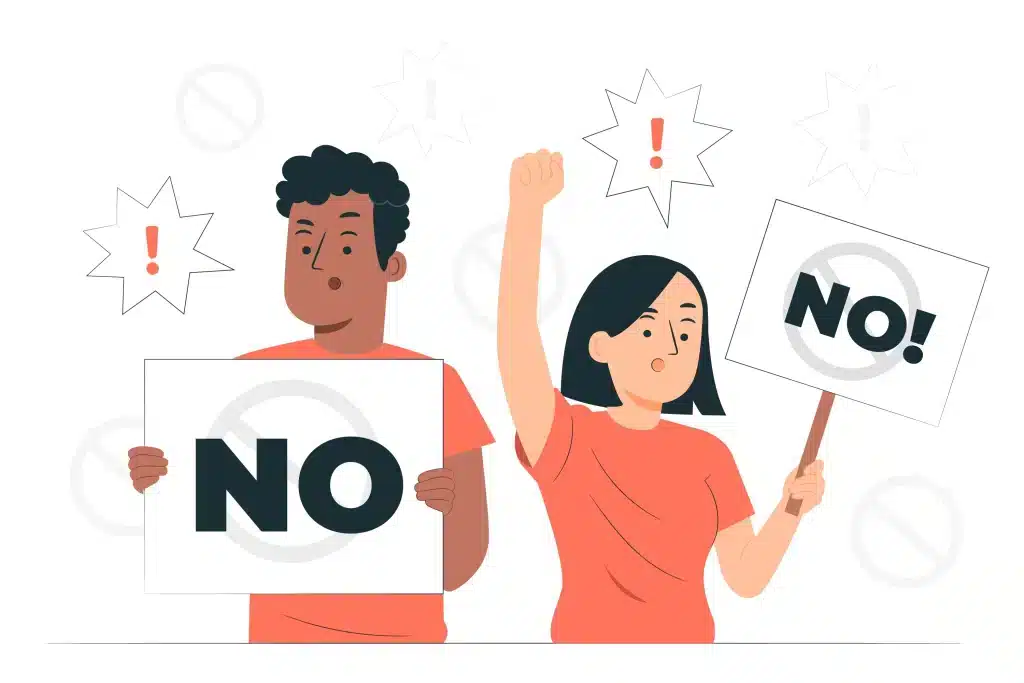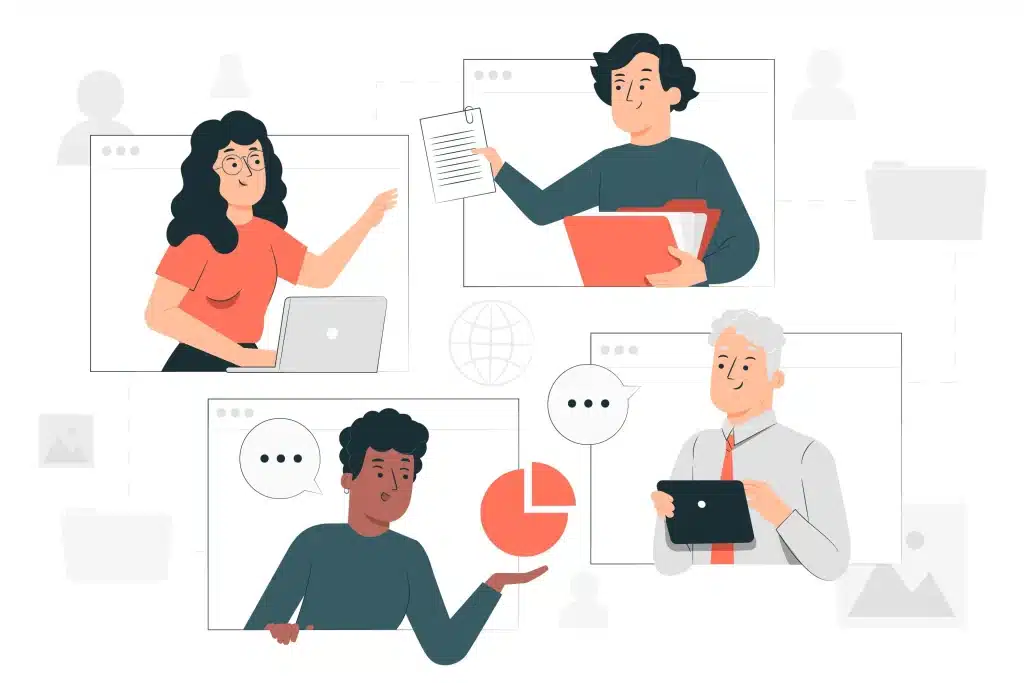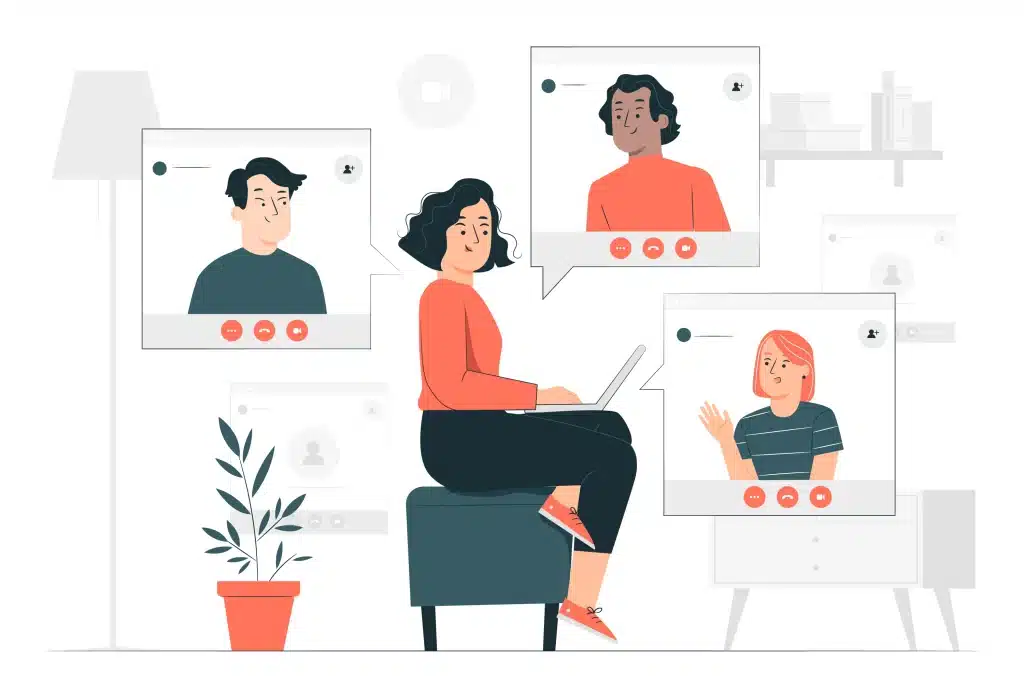
In the complex web of workplace dynamics, the Human Resources (HR) department is the linchpin tasked with maintaining the delicate balance between the organization’s goals and its employees’ well-being. However, this key role does not come without challenges. Employees, the lifeblood of any organization, often harbor concerns and dissatisfaction with HR practices. Recognizing and addressing these issues is paramount to creating a positive and collaborative work environment.
As we examine ten common challenges HR employees face, it’s important to view them not as obstacles but as opportunities for improvement. By understanding the intricacies of these issues, HR professionals can rethink their strategies, improving communication, transparency, and overall employee relations. In this article, we will examine each complaint through the lens of constructive criticism, offering ideas and actionable solutions to bridge the gap between HR practices and employee expectations.
Lack of Communication
Employees’ primary complaint about HR is a perceived lack of communication. Employees may feel uninformed about policy changes, benefit updates, or important organizational developments. To address this, HR departments should prioritize transparent and timely communication through various channels, such as company newsletters, emails, and town hall meetings.
Understanding the Challenges:
- Transparent Communication Channels:
- Establishing clear and accessible communication channels is fundamental. Whether through company-wide emails, newsletters, or intranet platforms, the aim is to disseminate important information promptly and consistently.
- Timely Updates on Policy Changes:
- Employee frustration often stems from a lack of awareness about policy changes. HR should prioritize timely communication about any modifications to existing policies, ensuring clarity and understanding.
- Two-Way Communication:
- Encourage an open dialogue culture by creating feedback mechanisms. Regular feedback sessions, surveys, or suggestion boxes can provide valuable insights into employee concerns and preferences.
Implementing Solutions:
- Personalized Communication:
- Recognizing diverse communication preferences is crucial. Tailoring communication strategies to accommodate various styles ensures that information resonates effectively with all employees.
- Proactive Approach to Issue Resolution:
- Clearly communicate the process for addressing employee concerns. Providing transparency on how HR handles issues fosters trust and encourages employees to approach HR with confidence.
- Accessibility of HR Representatives:
- Accessibility is key. Ensure HR representatives are easily reachable by establishing regular office hours, providing contact information, and implementing efficient systems to respond to employee inquiries promptly.
- Regular Check-ins:
- Regular check-ins or updates can keep employees informed about ongoing HR initiatives. Utilize departmental meetings, virtual town halls, or dedicated newsletters to share pertinent HR-related information.
- Utilize Technology:
- Leverage technology to streamline communication. HR management software and communication platforms can simplify information-sharing processes, ensuring employees have easy access to relevant updates.
Bridging the communication gap between HR and employees is pivotal to cultivating a positive workplace culture. By implementing these strategies, HR professionals can address the grievances associated with the lack of communication and foster an environment of transparency, trust, and collaboration. Effective communication is the cornerstone for a thriving and cohesive workplace.

Inconsistent Enforcement of Policies
Employees may become frustrated when they perceive inconsistencies in the application of HR policies. HR should strive for fairness and consistency in policy enforcement, ensuring that all employees are treated equally and that deviations are justified and communicated clearly.
Understanding the Challenges:
- Clarifying Policy Application:
- The core of inconsistent policy enforcement often lies in a lack of clarity regarding how policies should be applied across different scenarios. HR must provide clear guidelines on policy interpretation to avoid discrepancies.
- Training for Consistency:
- Inconsistent policy enforcement may stem from variations in how managers interpret and implement policies. HR should conduct training sessions for managers, ensuring a uniform understanding and application of policies throughout the organization.
- Regular Policy Audits:
- Periodic audits of policy enforcement can identify inconsistencies and gaps. HR should proactively review and assess policy adherence across departments, addressing any discrepancies promptly.
Implementing Solutions:
- Communication of Policies:
- Effective communication is key to consistent enforcement. HR should ensure that policies are clearly communicated to all employees, with easy access to a comprehensive policy handbook that outlines expectations and consequences.
- Transparency in Enforcement:
- Transparency fosters trust. HR should communicate the consequences of policy violations clearly and consistently, ensuring employees understand the repercussions of their actions.
- Feedback Mechanisms:
- Establishing channels for employee feedback on policy enforcement can unveil potential issues. HR should actively seek input, providing employees with a platform to express concerns or seek clarification on policies.
Navigating the landscape of policy enforcement requires a strategic and proactive approach from HR professionals. HR can establish a culture of fairness and equity by addressing the root causes of inconsistency, implementing comprehensive training programs, and fostering open communication channels. Ultimately, a workplace where policies are consistently applied boosts employee morale and contributes to a more harmonious and productive organizational environment.

Inaccessible HR Representatives
Difficulty in reaching HR representatives is a frequent source of frustration for employees. HR should establish accessible communication channels, including regular office hours, email responses, and an efficient ticketing system, to address employee concerns promptly.
Understanding the Challenges:
- Limited Office Hours:
- Inaccessibility often arises from HR professionals maintaining limited office hours. Employees may find it challenging to connect with HR when their availability does not align with the workforce’s needs.
- Communication Channels:
- The absence of clear communication channels or responsive platforms can contribute to the perception of inaccessibility. Lack of responsiveness to emails or delayed responses exacerbates this issue.
- Absence of Defined Protocols:
- In the absence of well-defined protocols for contacting HR, employees may feel uncertain about the appropriate channels to use or the expected response times, leading to frustration.
Implementing Solutions:
- Extended Office Hours:
- To accommodate varied schedules, HR should consider extending office hours or adopting flexible scheduling options. This allows employees to connect with HR representatives outside standard working hours.
- Responsive Communication Channels:
- HR should ensure the availability of responsive communication channels, such as a dedicated email address, a helpline, or an online ticketing system. Regularly monitoring and promptly addressing inquiries through these channels enhances accessibility.
- Regular Check-ins:
- Initiate regular check-ins or office hours specifically designated for addressing employee concerns. This proactive approach ensures that employees have designated times to engage with HR representatives and seek assistance.
Enhancing accessibility to HR representatives is pivotal for fostering a collaborative and supportive workplace culture. By addressing the challenges of limited office hours, improving communication channels, and establishing clear protocols, HR professionals can bridge the accessibility gap. In doing so, they address immediate concerns and contribute to a more transparent and employee-centric organizational environment. Accessible HR representatives are vital in building trust, resolving issues promptly, and fostering a positive workplace atmosphere.

Impersonal Employee Relations
Some employees feel that HR lacks a personal touch when addressing their concerns. HR professionals should focus on building relationships with employees, actively listening to their needs, and providing empathetic support.
Understanding the Challenges:
- Transactional Interactions:
- Impersonal employee relations often stem from HR interactions that focus solely on transactional matters, such as administrative tasks and policy enforcement, without addressing employees’ individual needs and concerns.
- Lack of Empathy:
- A lack of empathy in HR interactions contributes to the perception of impersonality. Employees need to feel that HR understands their challenges and is genuinely interested in their well-being.
- Standardized Communication:
- Standardized and generic communication approaches can make employees feel like just another number in the system. Tailoring communication to individual needs and situations is crucial for creating a personalized experience.
Implementing Solutions:
- Personalized Employee Engagement:
- HR should actively engage with employees on a personal level, showing interest in their career aspirations, challenges, and achievements. This could include regular check-ins, career development discussions, and recognition of individual accomplishments.
- Empathy Training for HR Professionals:
- Providing empathy training for HR professionals can enhance their ability to connect with employees on a personal level. Training should focus on active listening, understanding diverse perspectives, and expressing empathy in interactions.
- Customized Communication:
- Move away from one-size-fits-all communication strategies. Tailor communication to individual preferences and needs, ensuring that employees receive information in a way that resonates with them personally.
Incorporating a personal and empathetic touch into employee relations is essential for building a positive workplace culture. HR professionals can shape the employee experience by addressing the challenges of transactional interactions, fostering empathy, and customizing communication. By prioritizing personal connections, HR strengthens its relationship with employees and contributes to a more engaged, satisfied, and motivated workforce. Nurturing a sense of connection within employee relations is a cornerstone for building a thriving and cohesive organizational environment.

Inadequate Training and Development Opportunities
Employees often criticize HR for insufficient training and development opportunities. HR should work closely with management to identify and implement training programs that align with employees’ career aspirations and contribute to their professional growth.
Understanding the Challenges:
- Limited Access to Learning Resources:
- Employees may express dissatisfaction when access to relevant learning resources, such as workshops, courses, or online materials, is limited. This can hinder their ability to acquire new skills and stay updated in their respective fields.
- Unclear Career Development Paths:
- Inadequate training opportunities often result from a lack of clear career development paths. Employees may feel stagnant in their roles without a roadmap for progression, impacting both motivation and productivity.
- One-Size-Fits-All Approach:
- A common challenge is the implementation of a generic training approach that may not cater to the diverse learning needs and career aspirations of individual employees.
Implementing Solutions:
- Assessment of Skill Gaps:
- HR should conduct regular assessments to identify skill gaps within the workforce. This data-driven approach allows for targeted training programs that address specific needs and enhance overall competency.
- Tailored Career Development Plans:
- Work collaboratively with employees to create personalized career development plans. This involves setting clear goals, identifying relevant training opportunities, and establishing a roadmap for career progression.
- Diverse Learning Platforms:
- Offer a variety of learning platforms, including workshops, webinars, online courses, and mentorship programs. This ensures employees can choose the learning methods that suit their preferences and schedules.
Prioritizing training and development is not just an investment in individual employees; it’s an investment in the organization’s future success. By addressing challenges related to limited access, unclear career paths, and a one-size-fits-all approach, HR professionals can create a culture that values continuous learning and empowers employees to reach their full potential. In doing so, organizations not only enhance employee satisfaction and retention but also build a more agile and competitive workforce prepared for future challenges.

Unclear Performance Expectations
Employees may feel frustrated when performance expectations are unclear or inconsistently communicated. HR can mitigate this by collaborating with managers to establish transparent performance expectations and regularly evaluate and adjust them.
Understanding the Challenges:
- Ambiguous Job Descriptions:
- Unclear performance expectations often stem from vague or outdated job descriptions. Employees need a clear understanding of their roles, responsibilities, and the expectations tied to their positions.
- Lack of Regular Feedback:
- Employees may feel adrift without consistent feedback on their performance. A lack of regular communication on expectations and progress can lead to uncertainty and anxiety.
- Inconsistent Evaluation Criteria:
- When criteria for evaluating performance are inconsistent or not clearly communicated, employees may find it challenging to gauge their progress and align their efforts with organizational goals.
Implementing Solutions:
- Clear and Updated Job Descriptions:
- Regularly review and update job descriptions to ensure they accurately reflect the roles and expectations for each position. Clearly outline responsibilities, key performance indicators (KPIs), and expected outcomes.
- Frequent Performance Feedback:
- Encourage a culture of continuous feedback. HR should work with managers to implement regular performance check-ins, providing constructive feedback on accomplishments and areas for improvement.
- Transparent Performance Metrics:
- Clearly communicate the performance metrics used to evaluate employee success. Establishing transparent and standardized criteria for performance assessments ensures fairness and consistency across the organization.
The success of any organization hinges on the collective efforts of its workforce, and clarifying performance expectations is a critical task for HR professionals. By addressing challenges related to job descriptions, feedback mechanisms, and evaluation criteria, HR can pave the way for a more transparent and goal-oriented workplace. In doing so, organizations enhance employee satisfaction and engagement and create a foundation for sustained success and achievement of organizational objectives. Clear performance expectations set the stage for individual and collective triumphs, contributing to a culture of excellence within the organization.

Inefficient Benefits Administration
Issues related to benefits administration, such as delays in processing claims or difficulty understanding coverage options, can cause employee dissatisfaction. HR should strive for streamlined benefits processes and provide clear, easily accessible information on available benefits.
Understanding the Challenges:
- Cumbersome Enrollment Processes:
- Lengthy and complicated benefits enrollment processes can lead to frustration among employees. Clear and simplified enrollment procedures are essential for a positive benefits experience.
- Lack of Communication on Benefits:
- Inefficient communication about available benefits, changes, or updates can result in employees being unaware of their options, leading to underutilization and dissatisfaction.
- Inadequate Technology Integration:
- Outdated or poorly integrated technology can hinder the administration of benefits. A lack of user-friendly systems may contribute to errors, delays, and a suboptimal employee experience.
Implementing Solutions:
- Simplify Enrollment Procedures:
- Streamline benefits enrollment processes to be user-friendly and efficient. Implement digital platforms that guide employees through the enrollment process, providing clear information and assistance.
- Effective Communication Strategies:
- Establish effective communication strategies to keep employees informed about available benefits. Regularly update employees on changes, deadlines, and additional offerings through various channels such as emails, newsletters, and informational sessions.
- Leverage Technology for Efficiency:
- Invest in modern and integrated HR technology that simplifies benefits administration. User-friendly portals and apps can enhance the employee experience, making it easier for them to access and manage their benefits.
Efficient benefits administration is about providing perks and ensuring employees can effortlessly navigate and make the most of them. By addressing challenges related to enrollment processes, communication, and technology integration, HR professionals can optimize the benefits experience. This contributes to employee satisfaction and retention and underscores the organization’s commitment to the well-being of its workforce. A streamlined benefits administration process invests in employees’ happiness and engagement, fostering a positive workplace culture and positioning the organization as an employer of choice.

Limited Recognition and Rewards
Employees may feel undervalued if HR does not adequately recognize their contributions or provide meaningful rewards. HR should work with management to implement recognition programs and reward systems that motivate and acknowledge employees for their hard work.
Understanding the Challenges:
- Infrequent Recognition Practices:
- Limited acknowledgment of employee contributions, whether through formal recognition programs or informal gestures, can result in employees feeling undervalued and demotivated.
- Lack of Personalization:
- Recognition programs that lack personalization may not resonate with employees. Generic or infrequent recognition can diminish the impact and fail to genuinely appreciate individual efforts.
- Insufficient Reward Systems:
- A lack of tangible rewards or a poorly structured reward system may contribute to a perception of limited recognition. Employees may feel their hard work is not adequately acknowledged or rewarded.
Implementing Solutions:
- Establish Comprehensive Recognition Programs:
- Develop and implement comprehensive recognition programs that encompass both formal and informal methods. These can include employee of the month awards, peer-to-peer recognition, and public acknowledgments during team meetings.
- Personalized Appreciation Approaches:
- Tailor recognition efforts to individual preferences. Understanding the unique contributions of each employee allows HR professionals to personalize acknowledgment, ensuring it resonates on a personal level.
- Structured Reward Systems:
- Implement a well-structured reward system tied to performance and achievements. Tangible rewards, such as gift cards, extra time off, or professional development opportunities, can enhance the impact of recognition efforts.
A workplace culture that values and recognizes employee contributions is essential for fostering a positive and motivated workforce. By addressing challenges related to recognition frequency, personalization, and reward systems, HR professionals can cultivate an environment where employees feel appreciated and motivated to excel. This contributes to improved morale and job satisfaction and enhances employee retention and organizational success. Recognizing and rewarding employees for their efforts is an investment in the overall well-being and success of both individuals and the organization.

Slow Response to Employee Concerns
Employees dislike encountering delays when addressing workplace concerns with HR. HR departments should prioritize timely responses to employee inquiries and issues, demonstrating a commitment to resolving concerns efficiently.
Understanding the Challenges:
- Frustration and Discontent:
- Slow responses to employee concerns can lead to frustration, discontent, and a sense of neglect. Employees may perceive their issues as unimportant, affecting their morale and engagement.
- Impact on Employee Trust:
- A lack of timely response can erode trust in the HR department and the organization as a whole. Employees may feel that their concerns are not valued, impacting their perception of the workplace environment.
- Escalation of Issues:
- Unaddressed concerns may escalate into more significant problems, affecting not only individual employees but potentially the overall morale and productivity of the entire team or department.
Implementing Solutions:
- Establish Clear Communication Channels:
- Clearly communicate the channels through which employees can express their concerns. Provide multiple avenues, such as email, a dedicated helpline, or an online ticketing system, to ensure accessibility.
- Set Clear Response Time Expectations:
- Establish clear expectations regarding response times for different types of concerns. Communicate these expectations to employees, managing their expectations and demonstrating a commitment to timely issue resolution.
- Implement Efficient Ticketing Systems:
- Utilize efficient ticketing or case management systems to track and respond to employee concerns. These systems help prioritize issues, ensure accountability, and provide a transparent view of each concern’s status.
A timely and effective response to employee concerns is vital for maintaining a positive workplace environment. By addressing challenges related to response time, setting clear expectations, and leveraging efficient communication channels, HR professionals can contribute to a culture of trust, open communication, and employee satisfaction. Prioritizing quick and attentive issue resolution addresses immediate concerns and helps prevent the escalation of problems, fostering a more positive and collaborative organizational atmosphere. Accelerating responsiveness to employee concerns is an investment in building a workplace where employees feel valued, heard, and supported.

Resistance to Change
When HR is perceived as resistant to change or slow to adapt to evolving workplace dynamics, it can lead to employee frustration. HR should embrace innovation, actively seek feedback, and adapt policies and practices to meet the changing needs of the workforce.
Understanding the Challenges:
- Fear of the Unknown:
- Employees may resist change due to a fear of the unknown. Uncertainty about the implications of change can lead to anxiety and reluctance to embrace new initiatives.
- Lack of Communication:
- Insufficient communication about the reasons behind change, its potential benefits, and the steps involved can contribute to resistance. Clear communication is crucial for addressing concerns and gaining employee buy-in.
- Perceived Threat to Job Security:
- Employees may resist change if they perceive it as a threat to their job security. Communicating how change aligns with long-term organizational goals can alleviate concerns and foster a sense of stability.
Implementing Solutions:
- Open Communication Channels:
- Foster open and transparent communication channels to keep employees informed about the reasons for change, its anticipated impact, and the benefits it can bring to both individuals and the organization as a whole.
- Employee Involvement in the Change Process:
- Involve employees in the change process by seeking their input, ideas, and feedback. When employees feel their voices are heard and considered, they are more likely to embrace and support the change.
- Provide Adequate Training and Support:
- Equip employees with the necessary training and support to navigate the changes successfully. Training programs can build confidence, enhance skills, and empower employees to adapt to new processes or technologies.
Acknowledging and proactively addressing concerns is the cornerstone of a healthy organizational culture in employee relations. As we conclude our exploration of the common gripes employees express about HR, it’s evident that a responsive and adaptive HR department is essential for nurturing positive workplace dynamics.
Conclusion
By embracing open communication, fostering transparency, and implementing practical solutions, HR professionals can transform these grievances into catalysts for positive change. The journey towards improved relations between employees and HR is an ongoing process that requires dedication, empathy, and a commitment to continuous improvement. As organizations evolve, so must their HR practices, ensuring a harmonious and collaborative environment where employees feel heard, supported, and valued.
This article was created by the FirstHR team. You can find even more helpful HR tips in the Guides section. In the Template section we have prepared for you the most popular HR documents that you can download for free. Enjoy!





